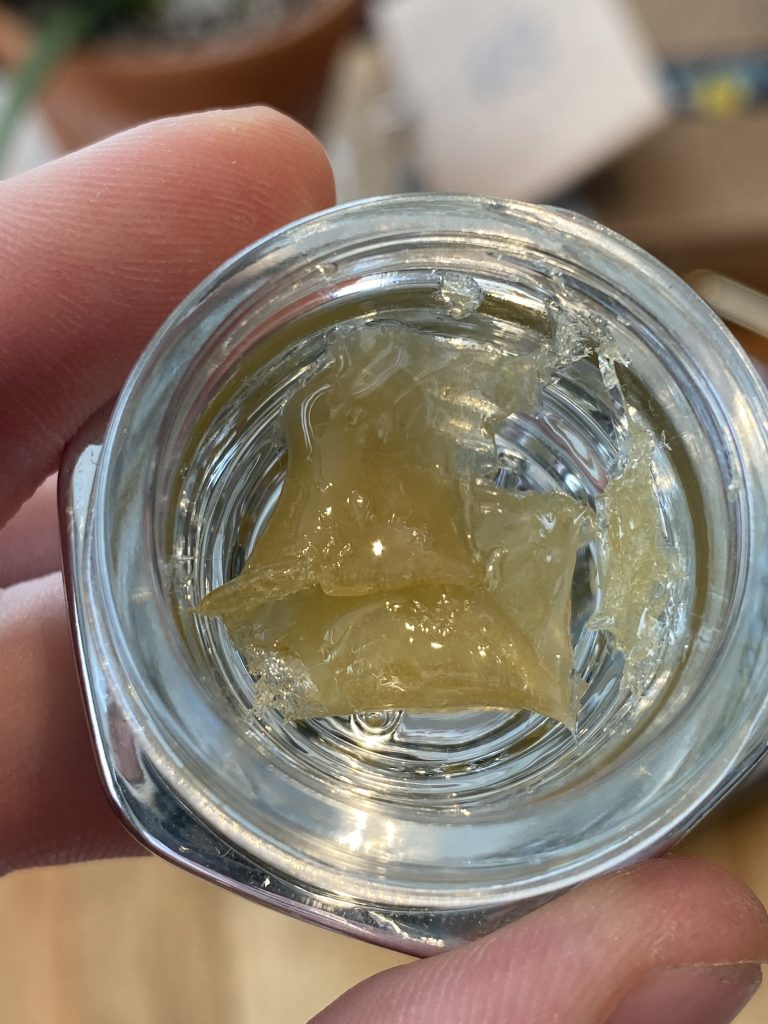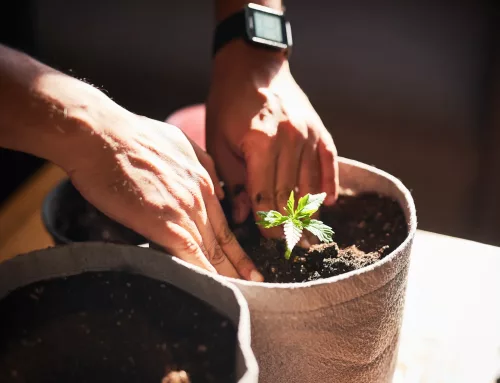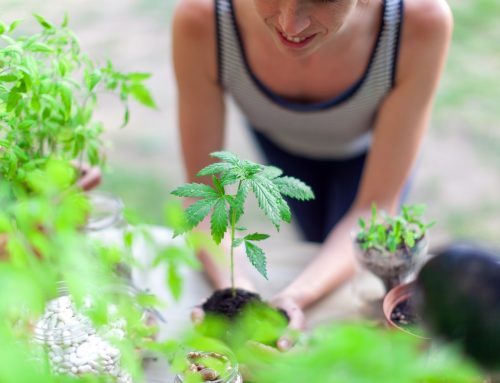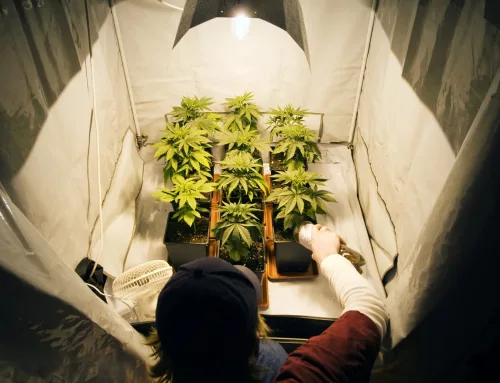Cultivation Archives
Autoflowering cannabis plants, or “autos”, offer a streamlined, fast track to harvest, making them an excellent choice for beginners and experienced growers alike.
Since 2023, I’ve started new growers exclusively with autos due to their ease of growing, fast timeline, and tolerance to the daily life around the home grow.
In recent years, advances in breeding have resulted in autoflowering plants with desirable modern expressions such as bag appeal, terpene content, and hashability.

The first time I ever committed an entire plant to solventless—and the reason I converted over to making solventless extracts exclusively—I was growing a Banana Hammock Auto.
With that said, even though autos remove a fair amount of the work, they do present their own set of challenges that can impact yields and quality of your crops.
This article will provide valuable tips to help you avoid common mistakes and get the most out of your autoflower cannabis seeds.
The Biggest Mistake Cannabis Growers Make with Autoflowers
The most costly mistake growers make with autoflowers is stunting their growth.
Stunting most commonly results from shocking a plant with a fixed timeline.
Unlike photoperiod plants, which can be kept in a vegetative state for extended periods to recover from stress, autoflowers have a finite growth window from seed to harvest.
Every minute counts and any stress will slow growth and reduce overall performance.
Avoid stunting and stressing your plants with these 12 tips to help you maintain momentum and get the most out of your autoflower seeds:
12 Pro Tips for Growing Autoflowers From Seed
1. Germination
Start strong by placing seeds in a warm, moist environment, making sure they have access to air to prevent suffocating your seedlings.
Proper germination is the foundation of a successful grow, especially with autos whose clock starts ticking the moment that root pops out.
2. Start in Final Container
Every time we disturb our plants, we create a tiny amount of stress. The bigger the change or disturbance, the more stress. That includes repotting or transplanting our cannabis seedlings.
Transplanting can stress autoflowers and stunt their growth, impacting the overall yield.
Some plants handle this better than others, but all plants often need time to recover. That’s time autos don’t have. Our goal is to minimize the shock wherever we can.
To avoid transplant shock, plant your seeds directly into their final container.
3. Avoid Breaking the Taproot
The taproot is crucial for the plant’s development. Any damage to it can significantly hinder a plant’s ability to grow efficiently, especially with autos.
Make sure your seed’s root is established enough (at least ½” long) before planting.
Be extra careful when handling seeds and seedlings to prevent any damage that could affect your grow’s overall performance.
4. Warm Roots Are Key
Maintaining warm root temperatures is essential to prevent stunting and encourage vigorous growth in the early stages of a plant’s life.
With the short timeline autos have to establish their roots, a warm root zone can make a massive difference on the size and performance of your autoflower.
If necessary, use a heating mat to keep your pots warm (but be careful not to overheat!).
5. Good Aeration is a Necessity
Like warmth, aeration, and porosity of your growing media will determine how much resistance your plants’ roots face in the early days of their lives.
The easier it is for your plant to grow big healthy roots, the more likely your auto is to develop a large healthy root zone that will support a larger plant.
Ensure your growing medium has good aeration. Well-aerated soil promotes larger root systems, which in turn support bigger, healthier plants.
6. Light Cycles
Unlike photoperiods, autoflower cannabis plants can thrive under what would be considered “vegetative” light cycles (18 hours on/6 hours off or 20 on/4 off, for example) from seed to harvest.
Autos will transition to flower without regard to your lighting cycle, hence “autoflower.”
As a result, you don’t have to worry about light contamination, another reason they are great for home growers and beginners who are adjusting to sharing their space with an indoor garden.
It is recommended to avoid 24 hours of continuous light as some autos won’t fully bloom without a dark period.
7. Opt to Top?
For autos, topping—removing the apical stem of a plant to allow its lower growth nodes to flourish as the “tops” of the plant—is controversial, and many still don’t top their autos.
Top too late, issues. Top too early, issues.
The plant has to be big enough to survive it, but young enough not to be stunted by the stress as it begins pre-flower and flower phases.
If you opt to top, it should be done before the plant enters the pre-flower stage, typically around week three.
If you see stigma (those little hairs), it’s generally considered too late to top.
8. Stable Environment
Maintain a stable environment with optimal conditions as often as possible.
Your goal is to keep your space as close to perfect as possible so that your plant never wants for anything, and never has to spend any energy accommodating itself to undesirable situations.
Aim for low 80s temperatures and 40-60% relative humidity to promote healthy growth.
Taper humidity down towards the second half of flower as needed to aid in preventing mold and mildew issues such as botrytis (bud rot) or powdery mildew (PM).
9. Ramp Up Your Light Intensity
Gradually ramp up the light intensity, but be cautious not to overdo it, as light stress can stunt growth.
Your goal is to strike a balance between giving the plant as much light as it can handle as fast as possible, without overdoing it, causing the plant to need extra recovery time.
Here are Happy Valley Genetics’ recommended UMOLE ranges for different stages:
UMOLE RECOMMENDATIONS (70-80 day auto timeline)
- Weeks 1-3: 150-400 uMole
- Weeks 4-5: 500-800
- Weeks 6-10: 800-1200
- Finishing: 800
10. Pot Size
The size of the pot influences the size of the plant. Autoflowers can grow to be 2-3 times the diameter of the pot.
For indoor or outdoor grows, a 7-10 gallon pot is ideal, though you can play with harvest timelines by using smaller or larger sizes (autos in smaller pots will typically flower faster than larger pots).
Keep in mind when selecting your pot size that you need to account for twice that diameter in the final space (otherwise you risk overgrowing your space or dealing with pathogens and pests). Which leads to…
11. Checkerboard Arrangement
To account for the extra space your plant will need once it is in full flower, arrange plants offset from one another, like a checkerboard.
A checkerboard pattern allows them to double in size comfortably and reduces the need for extensive plant training, trimming, and the resulting risk of stunting due to stress.
Plus, this will ensure your plants are getting good airflow throughout your grow.
12. Feeding Schedule
Autos often do not need as high concentrations when mixing feeds.
Start with half the feed recommended for photoperiod plants and adjust as needed.
This is especially true with bottled and mineral (powder) nutrients. You can always add more.
Overfeeding can burn plants, affect plant health, and stunt growth.
Monitor your plants closely and increase the feed gradually. You don’t want them to be hungry, but overfeeding can cause issues that stand in the way of a successful grow.
Autos are a great introduction for new growers, as well as an incredible cruise control option for experienced growers looking to hit the “easy button” for a few cycles.
Keep these 12 tips in mind and you’ll avoid the most common mistakes that keep growers from having a successful auto harvest.
Remember, every stage of the growth process is crucial, and maintaining optimal conditions from seed to harvest is key to getting the most out of your autoflower seeds.
READY TO GIVE AUTOS A TRY?
Pop a pack of Feminized Autoflower Seeds
by Happy Valley Genetics for your next grow!




